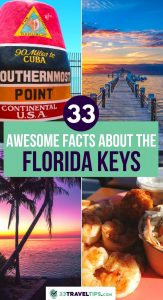
Looking for a seaside paradise for your next diving, fishing, or gastronomical adventure?
Then, let me introduce you to the Florida Keys.
The archipelago is a unique chain of small islands and mangrove clusters. It’s home to one of the largest coral reefs on the planet and some of the tastiest seafood I’ve ever tried.
Get to know the islands’ secrets with these 33 awesome facts about the Florida Keys.
Ready?
Let’s dive right in!
Short on time? Check my recommendations in the Florida Keys:
✅ Note: This article contains affiliate links. In case you purchase something through one of these links, we may receive a small commission at no extra cost to you. Thank you for helping us keep creating the free content on this website!
The Most Interesting Facts About Florida Keys
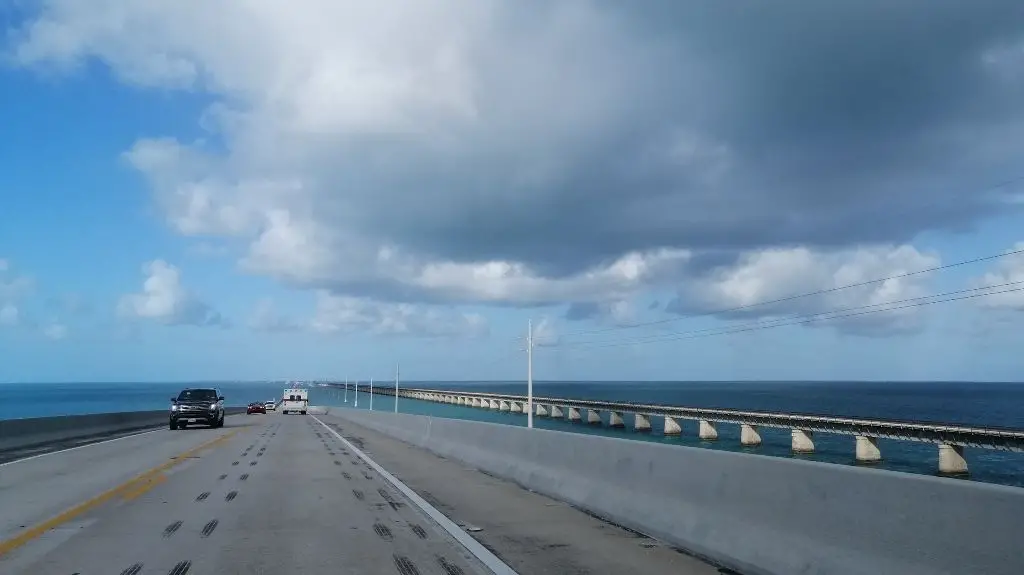
We’ll begin with a few fun facts about Florida Keys’ name, location, geography, and history. Some of them are plain crazy, so don’t just skim them. Let’s find out what the island chain has in stock for you.
- The name “key” comes from the Spanish word “cayo”. It translates to “small island”.
- The Florida Keys archipelago consists of 800+ keys, stretching for over 180 mi (290 km). However, only 43 of them are inhabited. The archipelago begins at the southeastern end of the Florida Peninsula, about 15 mi (24 km) south of Miami. It extends in an arc-shaped trajectory southwest to Key West, the last of the inhabited islands, and continues to the uninhabited Dry Tortugas.
- The longest of the inhabited keys is Key Largo, the smallest – Pretty Joe Rock. Key Largo measures 30 mi (48 km) long and 0.5 miles (0.8 km) wide. Pretty Joe Rock only houses one residence and is located off the coast of Marathon, the second-largest town in the Keys.
- In Key West, you’ll be closer to Cuba than to Miami. The Caribbean island lies only 90 mi (145 km) away, while Miami is located 150 mi (241 km) from Key West. No wonder the Keys have been infused with a unique blend of Cuban culture.
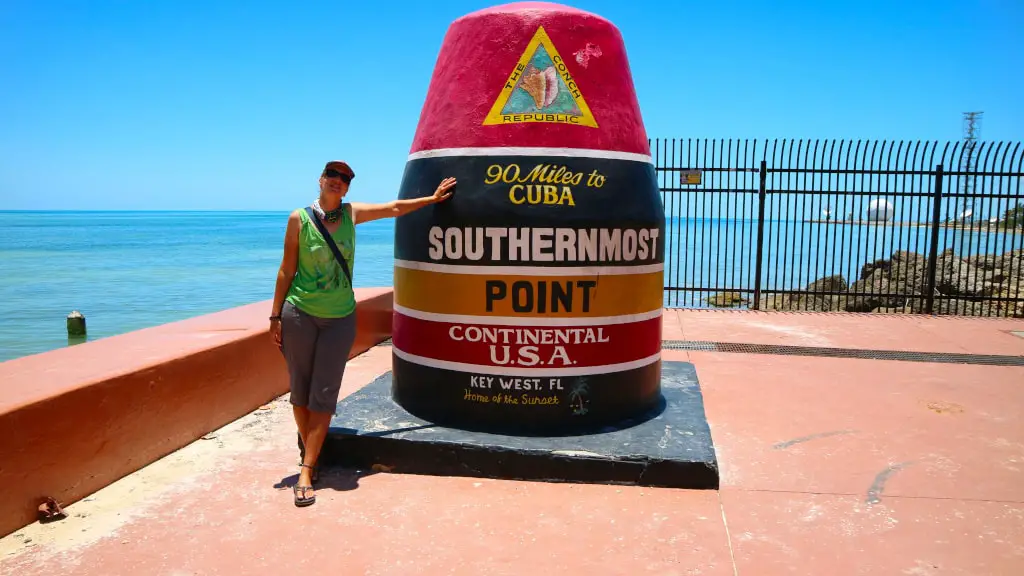
- For better navigation, the Florida Keys are often split into groups. The islands to the north and closest to Miami are named the Upper Keys. The isles between Pigeon Key and Grassy Key are known as the Middle Keys. The Lower Keys are the ones to the south. They are home to the largest city, Key West. Last but not least, the Outer Keys are the islets further away from the last inhabited one. You can access them only by boat.
- The Florida Keys don’t end at Key West. You’ve probably already guessed this from the previous fact. Key West is not the western-most of the Keys. The archipelago extends for another 70 mi (113 km) west to the Dry Tortugas National Park. You can explore the uninhabited islands of the park and Fort Jefferson on a day trip or an overnight camping adventure. The easiest way to reach them is via the high-speed Yankee Freedom III ferry. You’ll travel for approximately 2:30 hours in each direction and pay $190 for the whole-day trip.
- 42 bridges connect the Florida Keys to the mainland. The Overseas Highway, which runs through the Florida Keys, is one of the most breathtaking scenic drives in the United States. The 113-mile-long concrete road was completed in 1938. The Seven Mile Bridge, named for its approximate length, is the longest and most stunning of the constructions. And the shortest bridge? Harris Gap Bridge with its modest 37 ft. (11 m).
- You can still see the remains of The Overseas Railroad. It operated between 1912 and 1935. The so-called Storm of the Century in 1935 heavily damaged the rails. The Category 5 hurricane hit on Labor Day, killing 400 people and devastating Long Key and its surroundings. It also washed away 40 mi (64 km) of tracks. Two miles of rails ended up ashore on the mainland at Cape Sable, 70+ miles away. The State of Florida used some of the remaining railway infrastructure to build the Overseas Highway.
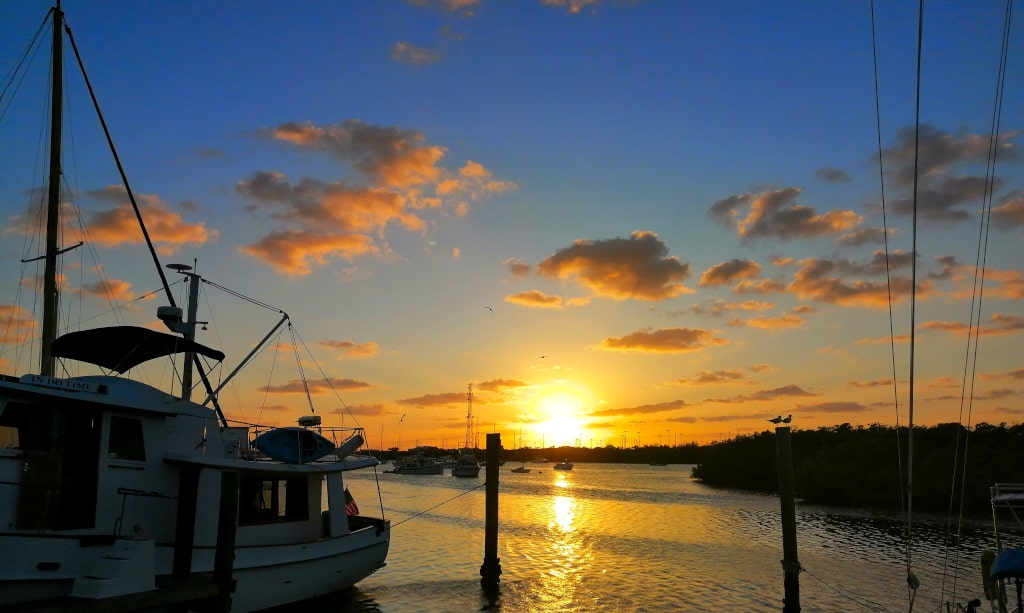
- Living on a boat in a marina can be much cheaper than owning a house in the Keys. This has to be the strangest fact about the Florida Keys. However, you can have a million-dollar waterfront view for the price of a boat and a slip in a marina. Many locals can’t afford to pay the exorbitant rents and opt for the liveaboard life. The biggest advantage of this lifestyle? You can escape much faster from a flood during the hurricane season with all your belongings. ✔️ Tip: If you’re wondering where to stay in Key West without going broke, my guide answers all your questions.
- You’ll never freeze in the Keys. It is one of the few places in the United States which never gets frost or snowfall. The lowest temperature recorded is 41°F (5°C). Given the climate in the last few decades, you’re unlikely to experience it any time soon. However, beware of the hurricane season from June to November. The storms hit Florida hardest usually in August and September.
- The Florida Keys have the best flight conditions in the U.S.A. Due to this fact, the U.S. Navy has built its training facility for air-to-air combat in Key West. The Keys also have two airports. One is located in Marathon and caters to private planes. The other one is in Key West and serves commercial flights.
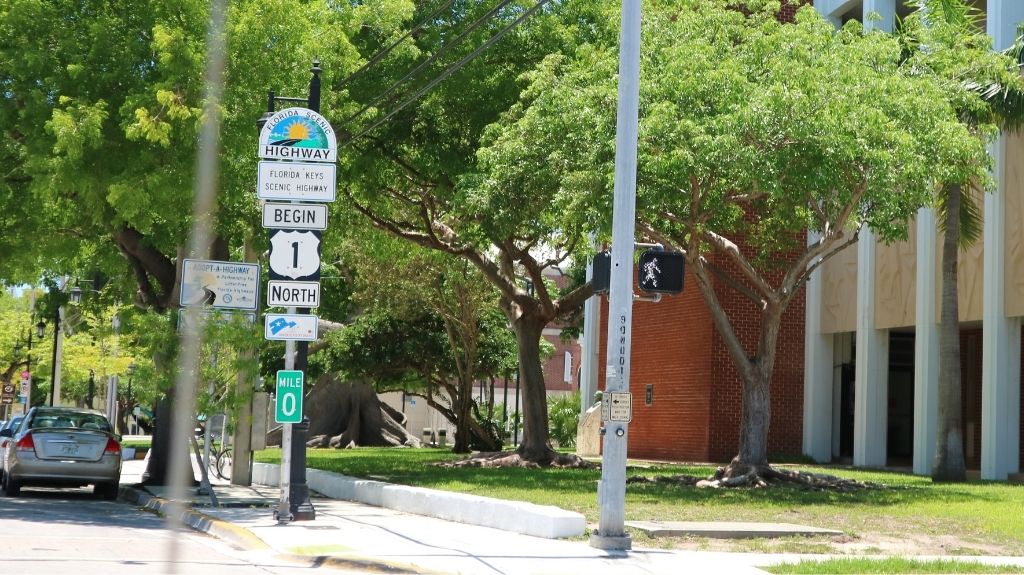
- Mile markers are a huge deal in the Keys. The Overseas Highway US 1, connecting the Florida Keys to the mainland, starts with MM 0 (Mile Marker Zero). You’ll find it at the corner of Whitehead Street and Fleming Street in the Old Town of Key West. One of the craziest facts about the Florida Keys is that you’ll also find a huge variety of “Mile 0” souvenirs everywhere in the Keys. The mile markers’ practical usage is to serve as addresses along the Overseas Highway from Key West to Key Largo.
- The wrecking industry made the Florida Keys one of the wealthiest areas in the U.S.A. Trade skyrocketed in the mid-1800s, as many ships traveled the trade routes between the East Coast, the Gulf of Mexico, and the Caribbean Sea. Due to heavy shipping, strong currents, and dangerous reefs, ships sunk every week. Even nowadays, you can still find some of their treasures scattered at the bottom of the ocean.
Fun Facts About the Wildlife of the Florida Keys
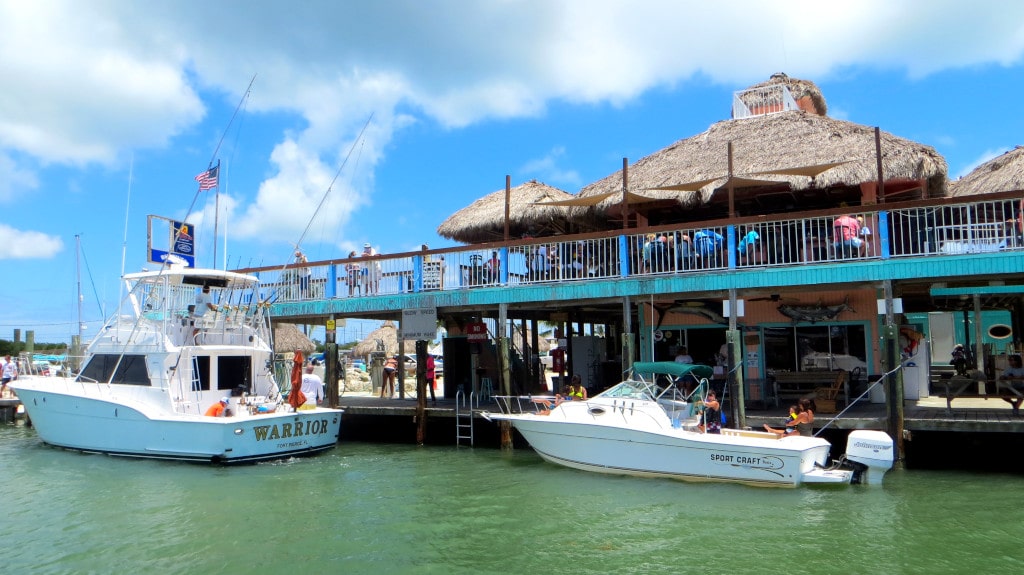
The Florida Keys are known as the mecca for sport fishing (Islamorada), diving (Key Largo), and treasure hunting (Key West). In this section, I’ll cover the wildlife encounters and the fun activities you can have when you visit. Grab your snorkeling and fishing gear, and dig right into these staggering facts about the Florida Keys.
- The Florida Reef is the third-largest barrier coral reef in the world. This is one of the most mind-blowing facts about Florida Keys. With its 170 mi (270 km), it’s only inferior to the Great Barrier Reef in Australia and the Belize Barrier Reef. The 4-mile-wide Florida Reef houses nearly 1,400 species of marine plants and animals. ✔️ Tip: Don’t forget to pack your snorkeling gear when visiting the Keys! In fact, why don’t you grab our handy Travel Checklist and always know what to prep for your next vacation 😉
- The Florida Keys separate the Atlantic Ocean from the Gulf of Mexico. The results of the merging of these major bodies of water are the diverse and unique ecosystems that inhabit them. Moreover, the Keys themselves are the exposed portions of a huge coral reef.
- The Florida Keys National Marine Sanctuary encompasses the coastal waters of the entire island chain. It also includes the shallow flats, the mangrove clusters, and the corals. Its purpose is to protect the only living barrier coral reef of the continental United States.
- 23 artificial reefs were created in the waters of the Keys. The Florida Keys National Marine Sanctuary is the only national marine sanctuary to have approved artificial reefs. Since 1981, they have deliberately sunk several ships. Artificial reefs formed around them.
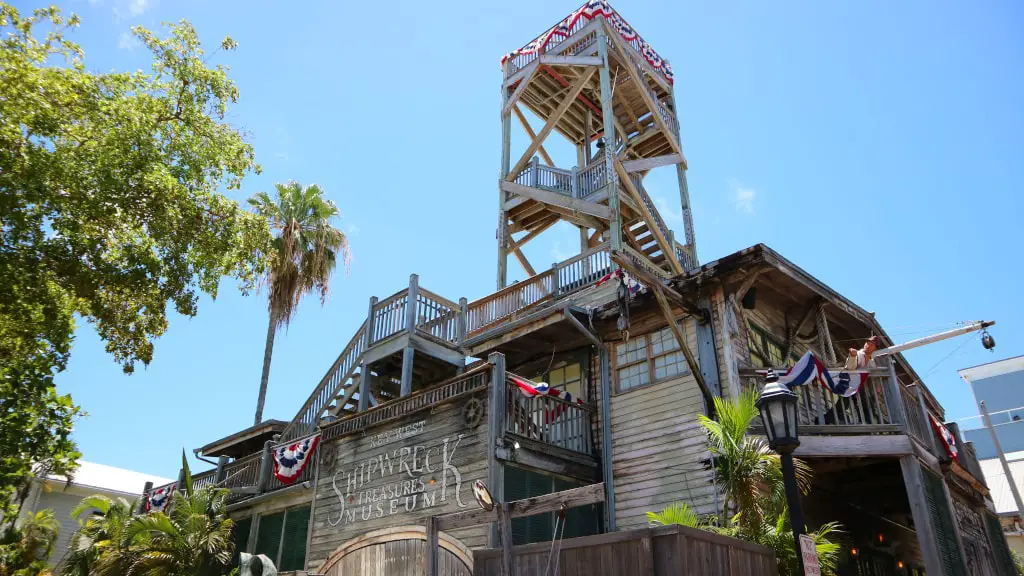
- You can explore the underwater wildlife and search for sunken treasures at the Florida Keys Shipwreck Trail. It consists of nine historic shipwrecks and artificial reefs in the Atlantic Ocean. They extend from Key Largo to Key West. The National Marine Sanctuary maintains them. Here’s a list of the nine shipwrecks:
- The City of Washington: Since 1917, east of Key Largo at 25 ft. depth, lie the remains of the City of Washington.
- The Benwood: The English ship from 1910 sunk in 1942 after a collision with another ship. She lies near Key Largo in depths ranging from 25 to 45 ft.
- The Duane: The U.S. Coast Guard cutter lies on a sandy bottom in 120 ft. deep water off the coast of Key Largo.
- The Eagle: Lies three miles northeast of the historic Alligator Reef Lighthouse, Islamorada in 110 ft. of water.
- The San Pedro: The oldest shipwreck on the trail was a member of the 1733 Spanish treasure fleet. A hurricane in the Straits of Florida caught her and she sank in 18 ft. of water one mile south of Indian Key, Islamorada.
- The Adelaide Baker: The remains of the three-masted bark from the 19th century lie 20 ft. deep four miles south-southeast of Duck Key.
- The Thunderbolt: The intentionally sunk in 1986 ship lies intact on a sand bottom, 120 ft. deep, four miles south of Key Colony Beach, Marathon.
- The North America: Supposedly, this shipwreck may be The North America, built in 1833 and lost in 1842 while carrying dry goods and furniture. Currently, she lies 14 ft. deep east of Sombrero Key, Marathon.
- The Amesbury: The U.S. Naval destroyer escort, locally known as Alexander’s Wreck, was built in 1943. Currently, she rests five miles west of Key West.
- Key Largo is crowned the Dive Capital of the World. After reading the previous several facts about the Florida Keys, I bet this comes as no surprise to you. Alongside the before-mentioned shipwrecks and reefs, Key Largo is also home to John Pennekamp Coral Reef State Park. The park is the first underwater preserve in the U.S.A. Exploring the massive underwater statue Christ of the Abyss off the coast of Key Largo is the absolute highlight of any diving adventure in the Keys. Imagine an 8-ft., 9-ton bronze statue (comparable to Christ the Redeemer in Rio de Janeiro, Brazil), resting on the seafloor in 30 ft. of water with hands raised towards the sparkling surface!
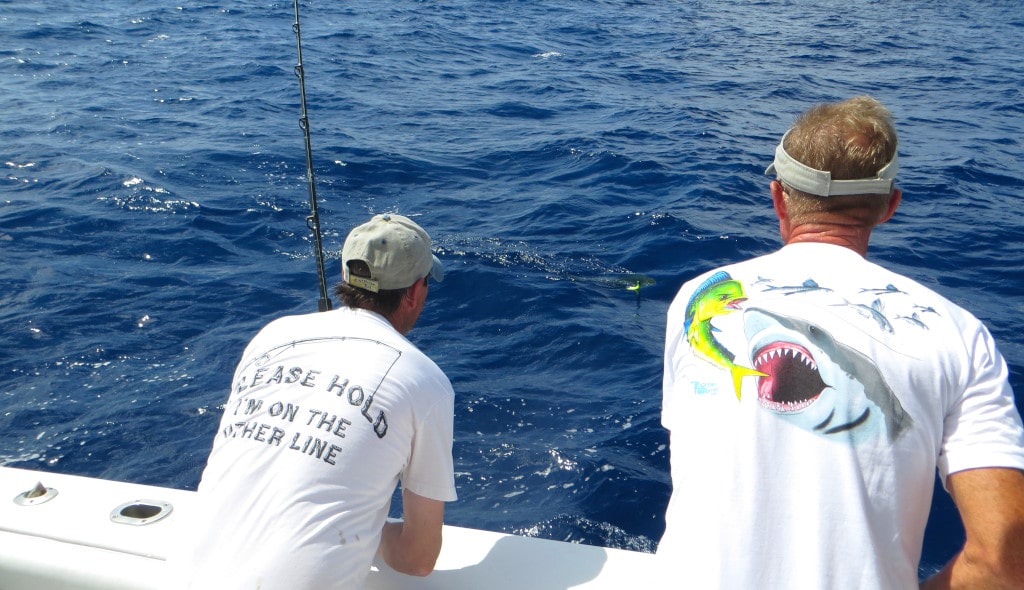
- The Florida Keys are the world’s leading sport fishing destination. You can go fishing for tarpons, groupers, mahi-mahis, marlins, sailfish, swordfish, and more. Also, you can catch lobster during the regular Lobster Season (August 6 through March 31). ✔️ Tip: If you prefer to avoid the crowds, come during the Mini Lobster Season on the last Wednesday and Thursday of July.
- Islamorada in the Florida Keys is the Sport Fishing Capital of the World. Here, backcountry sport fishing and saltwater fly-fishing originate. In Islamorada, there are more charter boats with tournament-grade captains than anywhere else in the world. Its unique location offers an unparalleled variety of fishing opportunities. The Gulf Stream flows past the Keys. With it, seasonal visitors like sailfish, marlin, kingfish, wahoo, mahi-mahi, and tuna come close enough to shore so that even small-boat anglers can target them. And if that’s not enough, light-tackle anglers can catch massive tarpon and bonefish, among other inshore species.
- You’ll find the largest number of sea turtle nests in the U.S.A. in the Florida Keys. The Turtle Hospital in Marathon is the best place to learn about the rescue, rehabilitation, and release of sea turtles in the Florida Keys. Out of the seven existing species in the world, five are native to the Keys. These are the green, the loggerhead, the leatherback, the hawksbill, and the Kemp’s Ridley turtles.
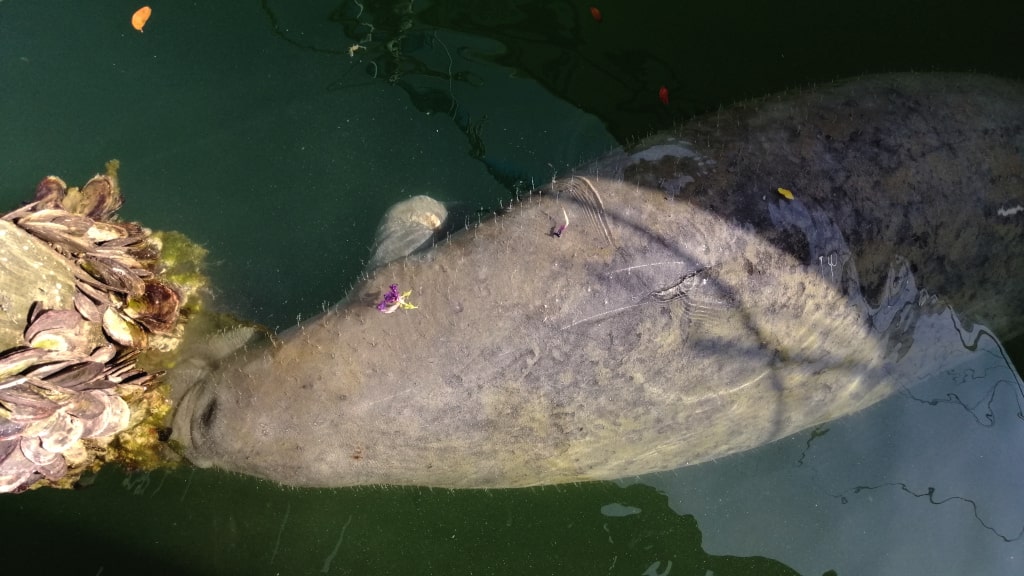
- You can observe the manatees during their mating season in the Florida Keys. The “sea cows” are solitary creatures, except during the mating season. Just like land cows, manatees spend most of their time grazing on (sea) grass. Although they live in the water, they’re mammals. Your best chance to spot them? Take a stroll between the boats in a marina. The 1,000-pound adults come to drink fresh water from the air cons’ drains or from running hoses!
- The Key Deer is an endangered species that lives only in the Florida Keys. You can see the smallest deer species in North America only in the forests of the archipelago. They are the smallest subspecies of white-tail deer. Big Pine Key in the Lower Florida Keys is the center of a national refuge for the miniature deer. Thanks to its efforts, the species has recovered from near-extinction to a thriving population. Drive carefully through this key to avoid hitting one.
Delectable Food Facts About the Florida Keys
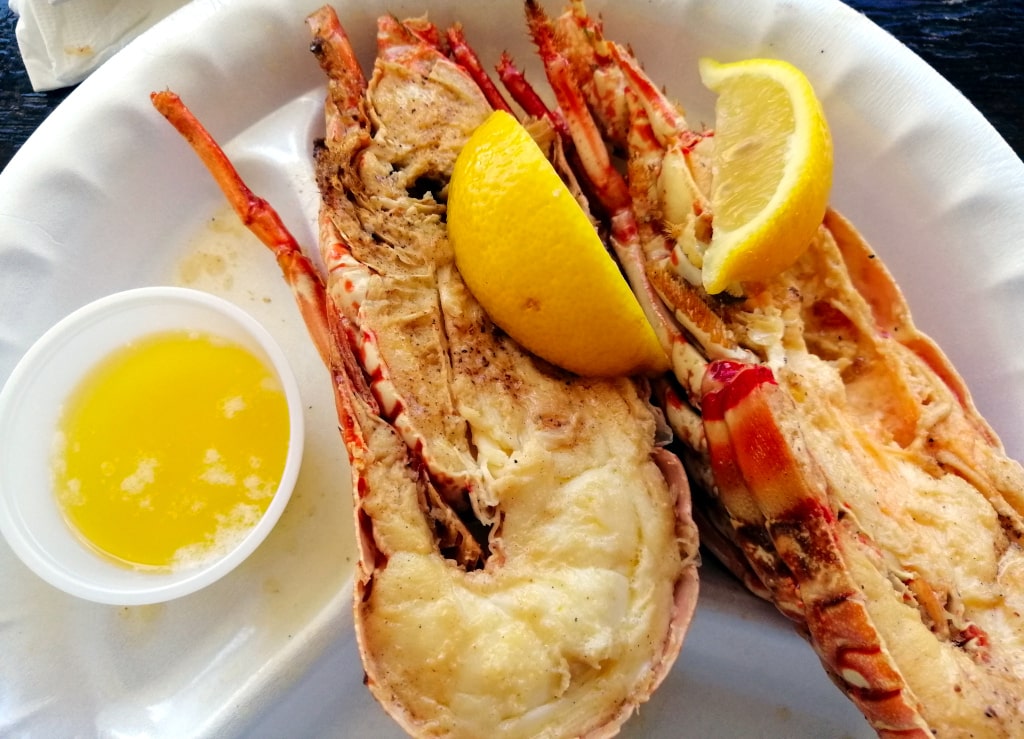
For your gastronomical explorations, I’ve gathered the most delectable food facts about Florida Keys.
✔️ Warning: Extreme salivation ahead. Please do yourself a favor and grab a napkin before you continue reading.
- Stuff your face with the best selection of godly dishes during seafood festivals. The Florida Keys Seafood Festival takes place in Key West on a whole weekend in January each year. The Marathon Seafood Festival is also a weekend event, but it happens in the middle of March. Apart from sampling tasty treats, you can listen to local bands or browse locally produced arts and crafts.
- Start your meal with a smoked fish dip. Every restaurant menu features the staple appetizer of the Keys. Locals are almost as passionate about the smoky starter as they are about the Keys’ staple dessert (see below). The dip may feature any fish, but it has to be freshly caught. The most widely used ones are mahi-mahi, cobia, Spanish mackerel, wahoo, and kingfish. You’ll typically eat your fish dip with saltine crackers.
- Try the dish that gives the locals their nickname. Conch (pronounced [konk]) is a large sea snail. The Queen Conch is the namesake of the Florida Keys Conch Republic. The most common way to eat the mollusks is as conch fritters. Other tasty dishes include ceviche, aka conch salad, and cracked conch, a tenderized, fried conch steak.
- Don’t miss the succulent meat of the stone crabs. The claws contain almost all of the crab’s meat, so this is the only part of the crab harvested. Once the fishermen remove one claw, they return the crab to the sea. In up to two years, the claws regenerate. This means that stone crabs are a renewable resource. The Florida Keys supply almost all of the state’s harvest. You can eat your portion of juicy stone crab claws warm with melted butter or chilled with mustard sauce. If you want to harvest and eat your own catch, Florida’s Stone Crab Season runs for seven months – from October 15 to May 15.
- The clawless spiny lobsters are to die for. The Florida Keys lobsters have sweet and tender tail meat. Steamed, boiled, or grilled, top them with melted butter, and your taste buds will skyrocket into heaven. Another exceptional dish that’ll make you drool is the Lobster Reuben sandwich. The best one I’ve had was at the Keys Fisheries in Marathon.
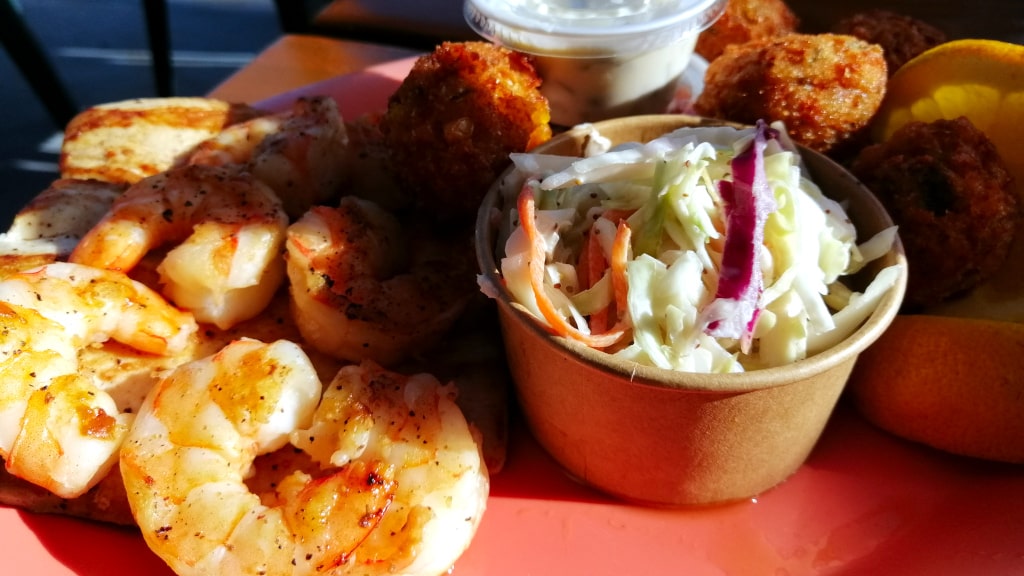
- The Key West pink shrimp is the sweetest among its crustacean relatives. You can savor the pinks sautéed in scampi, battered and fried, atop salad or pasta, or simply steamed and served with savory sauces. Some restaurants also serve shrimp burgers which are definitely my favorite.
- Key Lime Pie was originally a sailor’s dessert. The sweet-and-sour specialty dessert of the Keys originated on boats, using the ingredients on hand. Sailors cooked a mixture of condensed milk and eggs together with the citric acid from the Key lime’s juice, and poured it into a stale bread crust. Today, you can treat your taste buds with the scrumptious desserts everywhere in Florida.
- Unfortunately, finding locally grown Key limes in the Florida Keys is impossible. This might be among the most unexpected facts about Florida Keys, but it’s true. While you can eat your weight in Key Lime Pie in the Keys, finding the fragrant, tasty citrus fruits from a local tree can be a real challenge. The produce you’ll see in markets is imported from Mexico, India, and the West Indies.
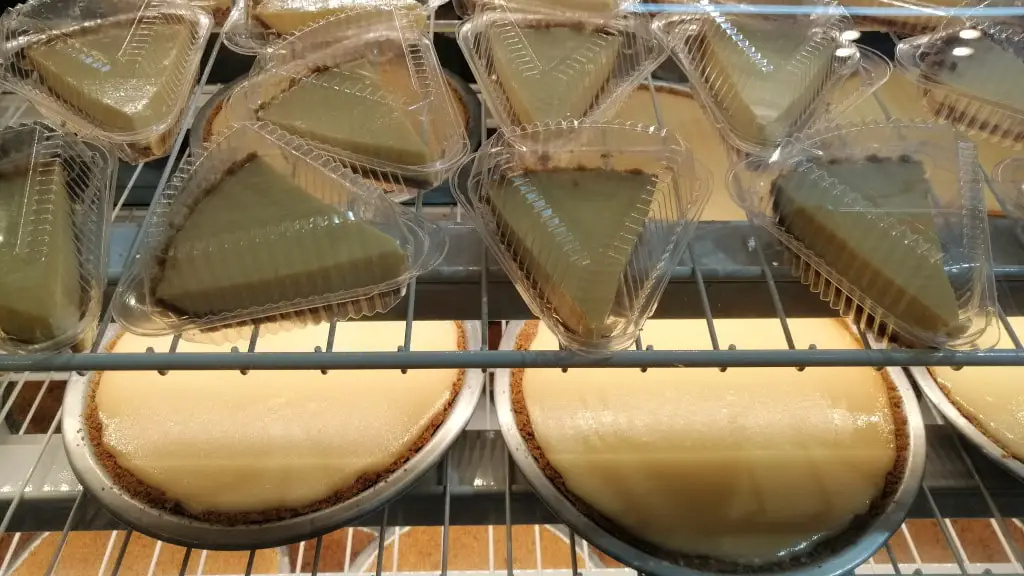
- Craft beer aficionados shouldn’t miss the Islamorada Beer Company’s selection. If you get the chance to visit the brewery for a tasting session, do it. Otherwise, you can find the sparkling hops elixir in bars, as well as in most supermarkets and liquor stores. Just between us, my favorite is the 5.1% Session IPA called Channel Marker.
Now You Know the Most Fascinating Facts About the Florida Keys
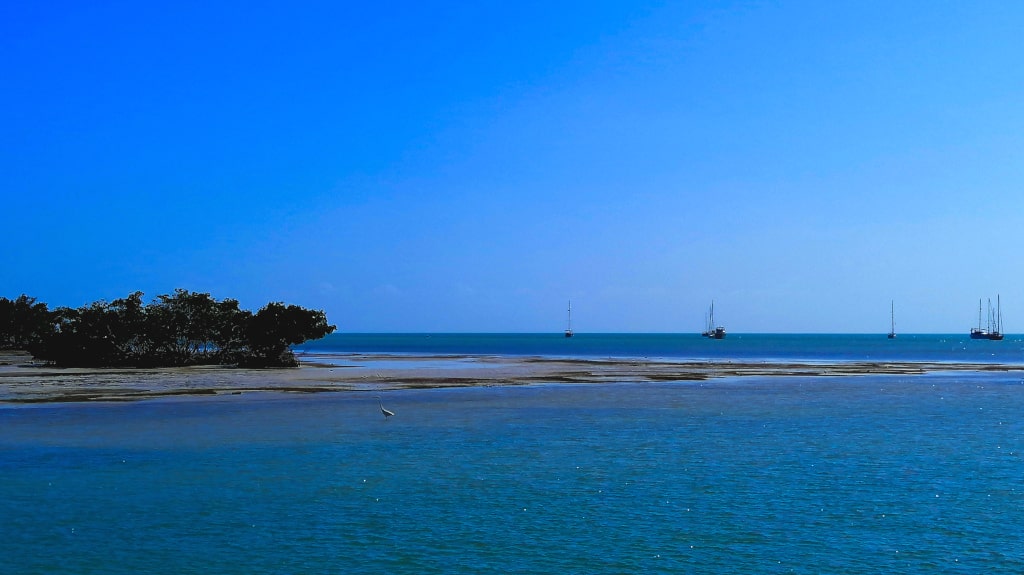
And there you have it – the 33 most fascinating facts about the Florida Keys.
You’ll hardly find another place in the world where you can pack so many awesome fishing, diving, and wildlife adventures into your vacation.
Even simply driving on the scenic roads and taking in the views, or dining in one of the exquisite restaurants is an awesome experience you won’t forget any time soon.
Did I manage to pique your curiosity with these fun facts about Florida Keys?
Now, share with me:
Which facts about the Florida Keys surprised you the most?
Let me know in the comments below.

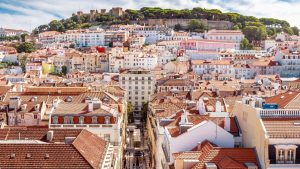
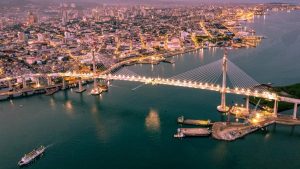

What about the flamingoes ??
Mary,
it isn’t common to spot wild flamingos in the Florida Keys, that’s why we haven’t mentioned them.
Cheers!
Greetings, Mary –
I lived in Florida for 28 years, and the only place I know if you see flamingos without fail is Sunken Gardens, in St. Petersburg.
In fact, all of Pinellas County is a designated bird sanctuary, with many of the species being migratory seasonal visitors, and you can see Roseate Spoonbills all year long in the retention ponds that flank the entrance to Tierra Verde, which is a boating community south of St. Pete Beach, near the Sunshine Skyway Bridge.
You can also see them all year in nearby Fort de Soto Park, especially in the wetlands, near the beaches.
Hey Cori,
thanks a lot for the clarification and the useful info! We’ll add your tip to our Day Trips from Tampa article where our first suggestion is St. Petersburg.
Cheers and happy travels!
Naddya and Svet